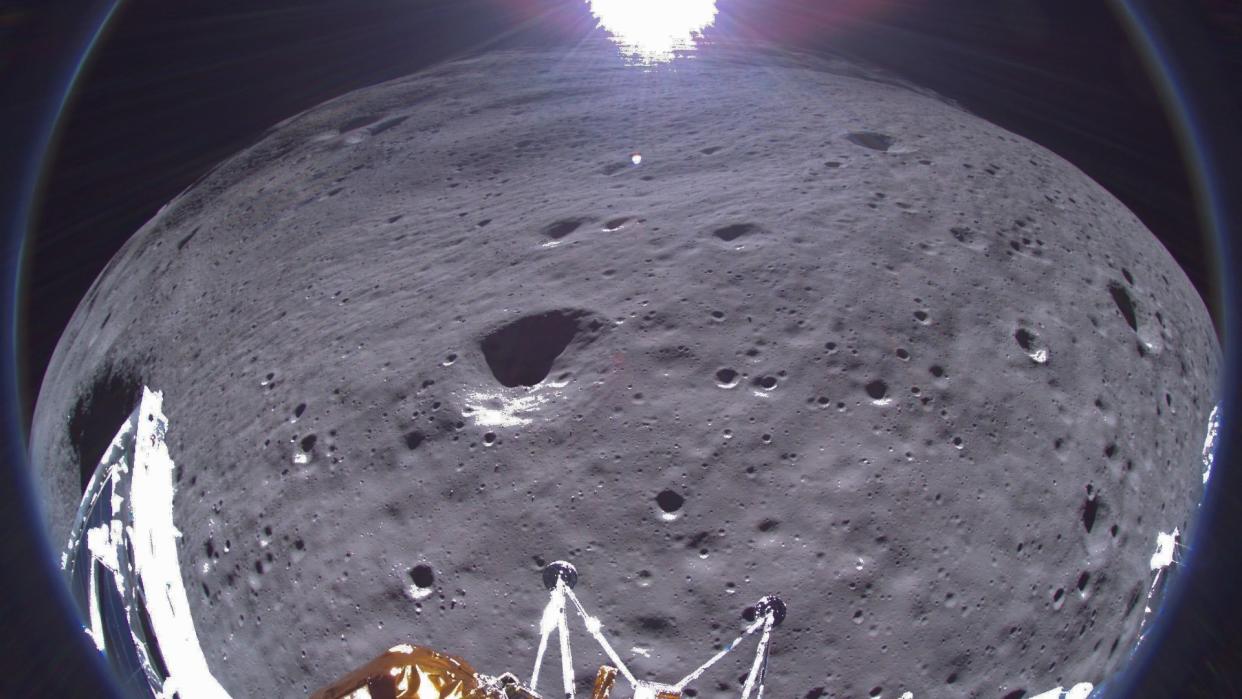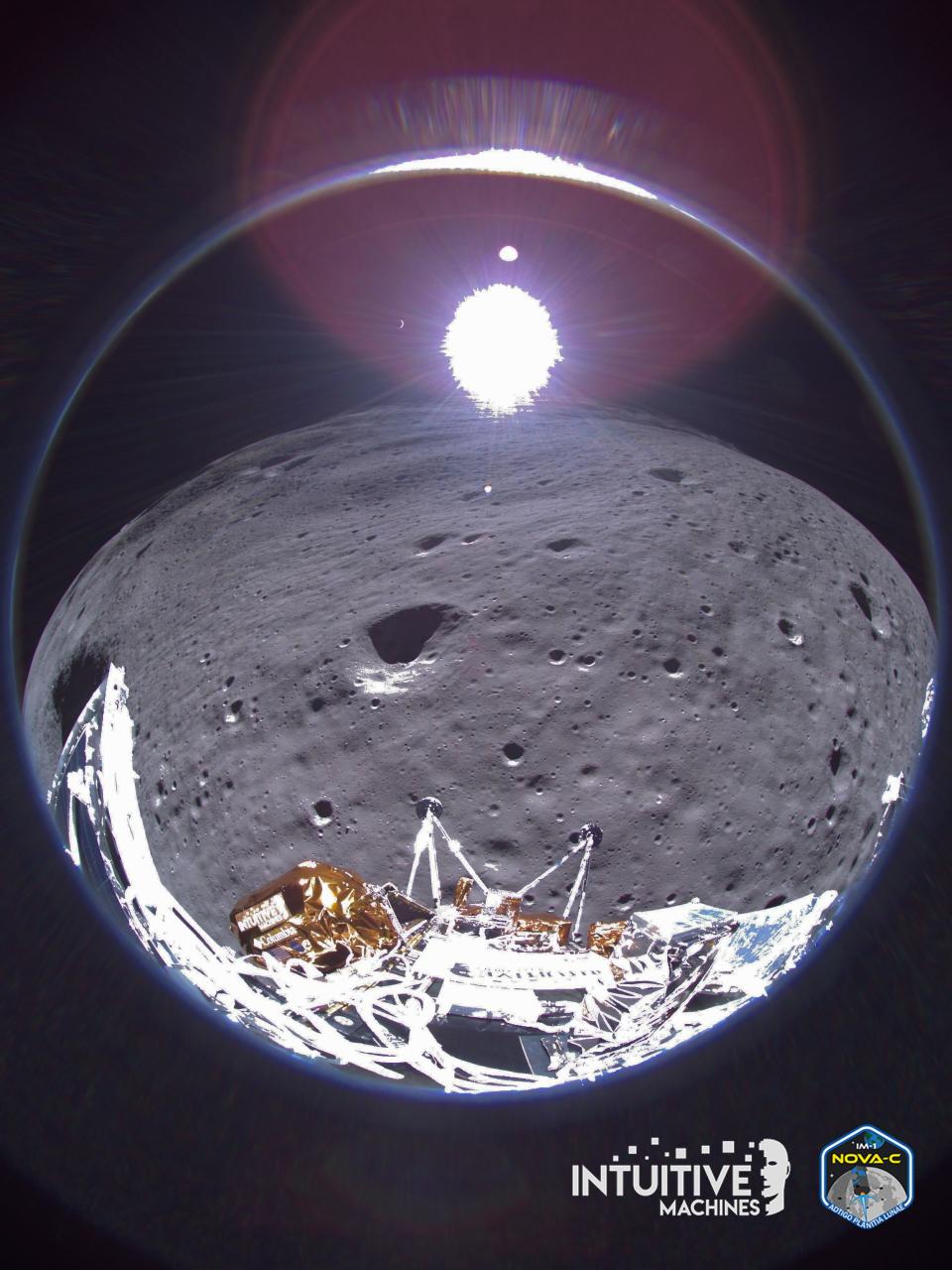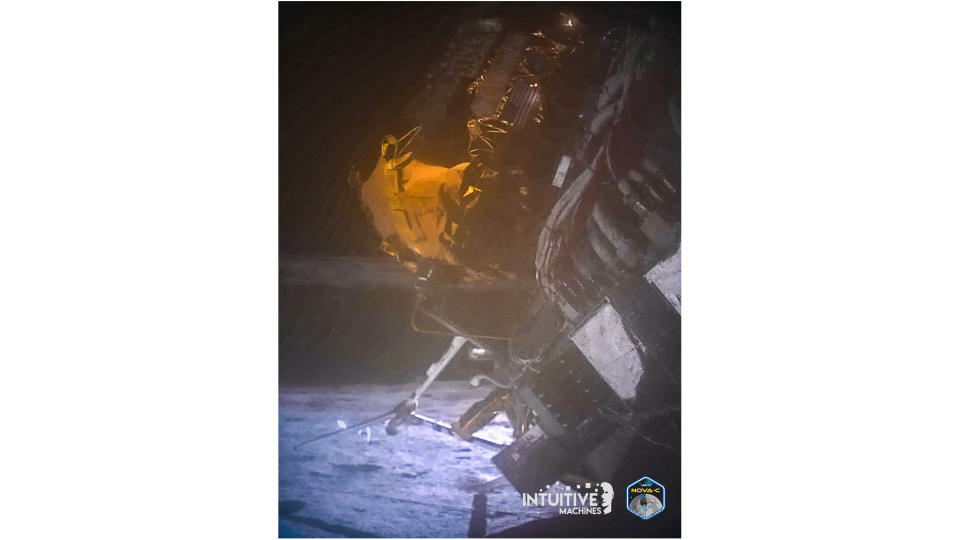Intuitive Machines' private Odysseus moon lander has 'permanently faded' on lunar surface as historic mission ends

The first successful private moon-landing mission is officially over.
On Feb. 22, Intuitive Machines' Odysseus spacecraft, affectionately known as Odie, touched down near the lunar south pole, becoming the first commercial vehicle ever to ace a moon landing.
The solar-powered Odie operated on the lunar surface for seven Earth days, then went silent after the sun went down at its landing site. This was the expected length of the lander's surface mission, but Intuitive Machines held out some hope that Odie would wake up when sunlight bathed its solar arrays once more. After all, Japan's SLIM moon lander bounced back from its lunar slumber late last month.
Over the weekend, however, we learned that Odie's eyes will remain closed for good.
Related: Goodnight, Odysseus. Intuitive Machines' private moon lander goes offline — but could it rise again?
"Intuitive Machines started listening for Odie's wake-up signal on March 20, when we projected enough sunlight would potentially charge the lander's power system and turn on its radio," the Houston-based company said in a post on X on Saturday (March 23).
"As of March 23rd at 1030 A.M. Central Standard Time, flight controllers decided their projections were correct, and Odie's power system would not complete another call home. This confirms that Odie has permanently faded after cementing its legacy into history as the first commercial lunar lander to land on the moon," Intuitive Machines added in another Saturday post.
The "projections" in that latter post are the company's original prelaunch predictions — that Odie's electronics would not survive the extreme cold of the long lunar night. (The moon's day-night cycle takes nearly a month to complete, so nighttime on Earth's nearest neighbor lasts about two weeks.)

Odysseus launched on Feb. 15 atop a SpaceX Falcon 9 rocket, carrying 12 payloads toward the moon. Six were NASA experiments that the agency put on board via a $118 million contract from its Commercial Lunar Payload Services program, or CLPS, and six were private payloads belonging to a variety of customers.
The 14.1-foot-tall (4.3 meters) Odie reached lunar orbit on Feb. 21 and landed a day later near Malapert A, a crater about 190 miles (300 kilometers) from the moon's south pole.
That landing turned out to be dramatic. Odie came in a bit faster than it was supposed to, thanks to a problem with its laser rangefinders, and ended up breaking one or more of its six landing legs during the touchdown. As a result, the spacecraft tipped over onto its side.
But Odie could still function in its supine state. NASA got data back from all five of its active payloads, agency officials said after the historic touchdown. (The sixth NASA payload is a passive laser reflector array that's designed to help other lunar spacecraft navigate.)
"The bottom line is that every payload has met some level of their objective, and we're very excited about that," Sue Lederer, CLPS project scientist at NASA's Johnson Space Center in Houston, said during a press briefing on Feb. 28.

RELATED STORIES:
— Here's what landed on the moon aboard Intuitive Machines' Odysseus lander
— Private Odysseus moon lander broke a leg during historic touchdown (new photos)
NASA and Intuitive Machines see Odie's landing as the first of many pulled off by private spacecraft in the coming years. For example, Intuitive Machines' CLPS contract calls for three moon landings, and the company hopes to launch its second mission later this year.
Pittsburgh-based Astrobotic also got a CLPS deal. Its first effort, with a lander called Peregrine, ended in failure this past January when the craft suffered a propellant leak shortly after deploying from its rocket.
Astrobotic is working on its next CLPS mission, which will use a bigger lander called Griffin to put NASA's ice-hunting VIPER rover down near the lunar south pole. VIPER is currently scheduled to launch late this year atop a SpaceX Falcon Heavy rocket.

